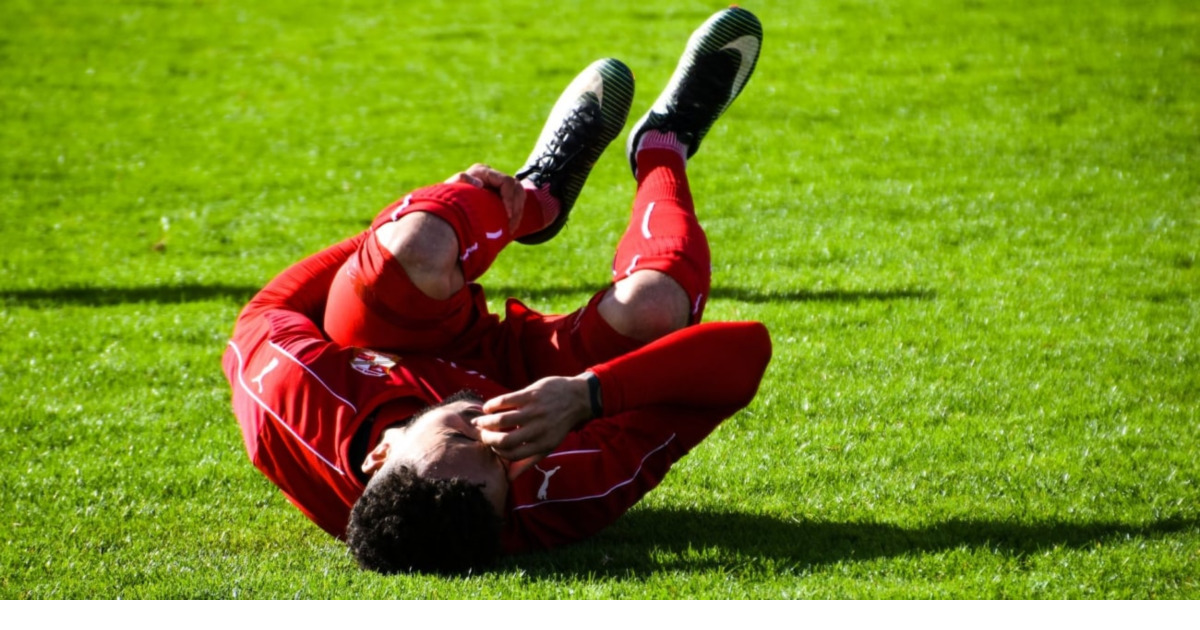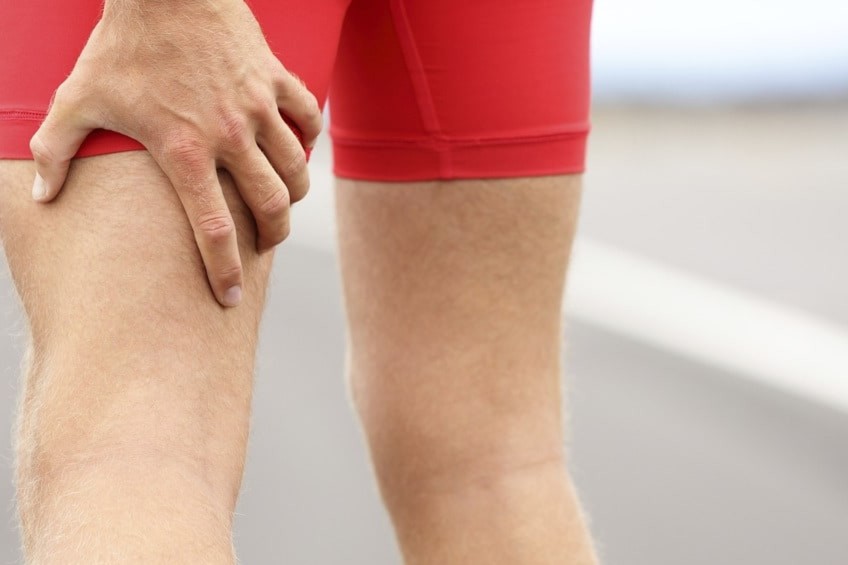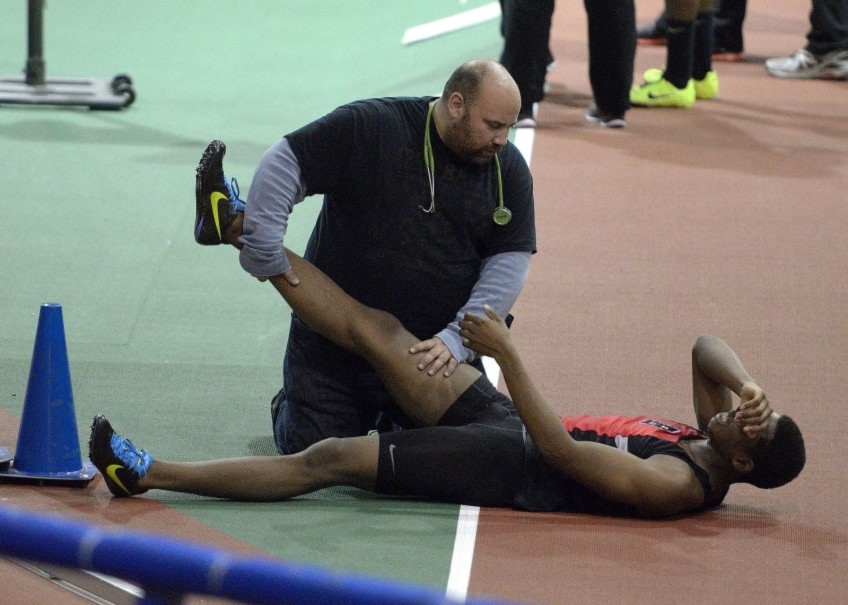
Get Rid Of Those Leg Cramps!
A leg cramp is a sudden pain that happens quickly in the calf muscles at the lower part of the leg, the muscles behind and in front of the thigh. It is a common disorder experienced by everyone, older people, pregnant women, athletes, weight lifters, cyclists, and swimmers inclusive.
Leg cramps can semmingly strike at any time while you are training with your home gym, doing sports or out running.
Cramp usually occurs when the muscles are not relaxed, and they spasm. That is, they contract involuntarily during a workout and or during sleep.
Leg cramps are generally painful, and sometimes they go away as quickly as they come while other times they won't just go away. Of course, there are remedies for getting rid of the pain, but it is also important to discover why they come in the first place.
What can cause leg cramps?
Some of the causes of leg cramps include
- Dehydration
- Staying in hot or cold temperatures for a long time
- Stressing the calf muscles too hard during exercise
- Irregular circulation of blood in the legs
- Tired or fatigued muscles, tight muscles
- Lack of sufficient levels of magnesium, potassium, and calcium
- Complications from a spinal cord injury or strained nerve endings in the back or neck
- Side effects from some drugs prescribed to treat different health problems
- Poor stretches before exercising
If you are seeking a cure for leg cramps, then read through the following tips for leg cramps remedy and prevention

Warm up before exercising
Warm-ups prepare your body for exercise by flooding major muscle groups with blood and enables flexibility. This way, your muscles are not shocked or go tight when you begin to perform your exercise because they have been set up for higher intensity movements. They lower the chances of muscle strain and help you achieve optimal results from exercising.
Stretching
When a particular muscle is used for too long, it spasms. The same thing happens to the leg muscles. Stretching the leg or changing your position when you feel a cramp can help you feel better. Stretching takes the muscle out of its cramped position and relaxes it. You can try the towel stretch, stair calf stretch, toe stretch, hamstring, quadriceps and calf stretches.
The Towel Stretch
The towel stretch can be used to stretch the calf and hamstring muscles, but if after performing the towel stretch you still feel a cramp in your calf and hamstring you can try the other stretches below.
To Perform The Towel Stretch
- Sit or lie flat on your back
- Stretch your leg and let your toes point up towards the ceiling
- Put the towel around your foot and hold both ends with one hand
- With your knees straight, use the towel to lift your cramped left slowly until you feel the muscles on your calf stretch
- Try to hold the stretch for at least 30 seconds. This will help release the stress on your calf muscles and nerves
To Perform The Stair Calf Stretch
- Place both feet at the bottom stair and face up
- Put your hand on the wall or rail for support
- Move backward carefully until the feel your feet come off the front edge of the stair
- Shift your weight to one foot and gently lower the heel of that foot to the floor
- Do not stop dropping the foot until you feel the muscles in your calf stretch. Try to hold the stretch for at least 30 seconds
To Perform The Toe Stretch
- Place your foot flat on the ground at the 90° angle
- Let your toes lie flat as you begin to lift the heel of your foot
- Bend towards 75° and 60° as you lift your foot with your toes on the ground. This will help relieve the muscles on your leg if you have a toe or calf cramp.
- Other stretches that can help relieve a cramp in the leg include:
- Stand facing a wall, keep a short distance then try leaning against the wall. Use your hands for support, keep the foot of your cramped leg straight on the floor and lean your upper region into the wall.
- Shift your weight unto your cramped leg, with your foot flat on the floor try to bend your knees slowly.
- Lie on your back and try to pull your knees up towards your chest. Exert additional pressure by asking someone to help you push them closer and closer to your chest until you feel the muscle stretch.
- Place your hand on a chair for support then bend the knee of your cramped leg and grab your foot. Try to pull your foot upwards towards your back.
Stay hydrated
Increasing the quantity of water you drink throughout the day, before and during exercising can prevent dehydration which is one of the causes of leg cramps. During exercise, your body loses essential fluids like sodium and potassium which upsets the balance of fluid in the body. These fluids need to be replenished, or it will cause the muscles to spasm. Drinking enough water and beverages can fix the problem of hydration and provide a cure for leg cramps.
Workout and train slowly
Do not rush your training sessions. Progress slowly so that your muscles adapt to more intense exercises without strain. Take breaks in between workouts to avoid putting too much stress on a particular muscle or body part. Cut down on your exercise time if you feel stressed
Do not sit for too long
Move around frequently so you can work the muscles on your legs. Movements help release tightness in muscles as a result of staying in one place. This action will make the muscles on your leg contract and relax thereby preventing leg cramps
Massage till you feel relief
For cramps that won't just go away, gently massaging the cramped area is a cure for leg cramps. This is the most common leg cramps remedy, and it is very efficient. A gentle massage around and on the cramped area can restore the flow of blood to your muscles, open up tight muscles and stop the pain. A frequent body massage can even prevent muscles and leg cramps
Eat foods high in minerals
Minerals like calcium, potassium, magnesium, and sodium are required for the muscles to function correctly. When there is a low level of calcium in the body, muscles cannot relax well, and this can cause leg cramps. It is also necessary to maintain the balance of these minerals.
Adjust your diet to include foods like yogurts, milk, apple cider vinegar, nuts, legumes, cheese, avocados, tofu and others which are high in magnesium, can keep you hydrated, balance fluids in the body and prevent leg cramps
Apply hot or cold pressure
Applying pressure from an ice pack or heat pad is usually helpful for those leg cramps that won't go away. Most people love to use ice packs, but it is advisable to try both out and see what works best for you. The pressure from the ice or heat pad will help release the tight muscles and improve the circulation of blood when you place it over the cramped area
Watch the temperature
Do not stay in too hot or too cold places or exercise in severe weather for a long time
Many swimmers tend to suffer from cramps in their calf and hamstring because of the tension they feel in the cold water. Too much exposure to cold or heat can make the muscles contract. Endeavor to keep the legs warm when in cold areas as this helps to prevent leg cramps
Use Epsom salt for foot baths
Epsom salt is high in magnesium, and when used to bath, the skin absorbs this magnesium. The magnesium in the salt is a leg cramps remedy and helps to soothe the pain in the affected area
Consume enough vitamins
Vitamins like B12, B2 and Vit E, are essential for proper muscle coordination, and their deficiency can make your muscles spasm resulting in leg cramps. Balanced mineral and vitamin level in the blood is a leg cramp remedy. You can take some multivitamins to boost your vitamin level as directed by your doctor
Wear the right shoe size
Shoes support the muscles in the ankles, and the wrong sizes will cause strain to these muscles and make your foot ache. This can lead to leg cramps. Avoid wearing heels that are too high if you are not used to them. Make sure you wear comfortable shoes that are not too tight if you want to prevent leg cramps

Seek medical advice
If your lifestyle begins to get affected or you experience those cramps that won't just go away after trying all the above leg cramps remedies, then you should see your doctor. You might be having a serious problem, and your doctor will examine you, ask some questions and prescribe some medication like Carisoprodol, Vanadom, Vit E and others to help relax your muscles.
Some leg cramps can occur as a result of diseases or health conditions such as; diabetes, overweight, liver problem or thyroid disease. Book an appointment with your doctor if you are experiencing any of these while you are working out with your home gym equipment.
Add new comment